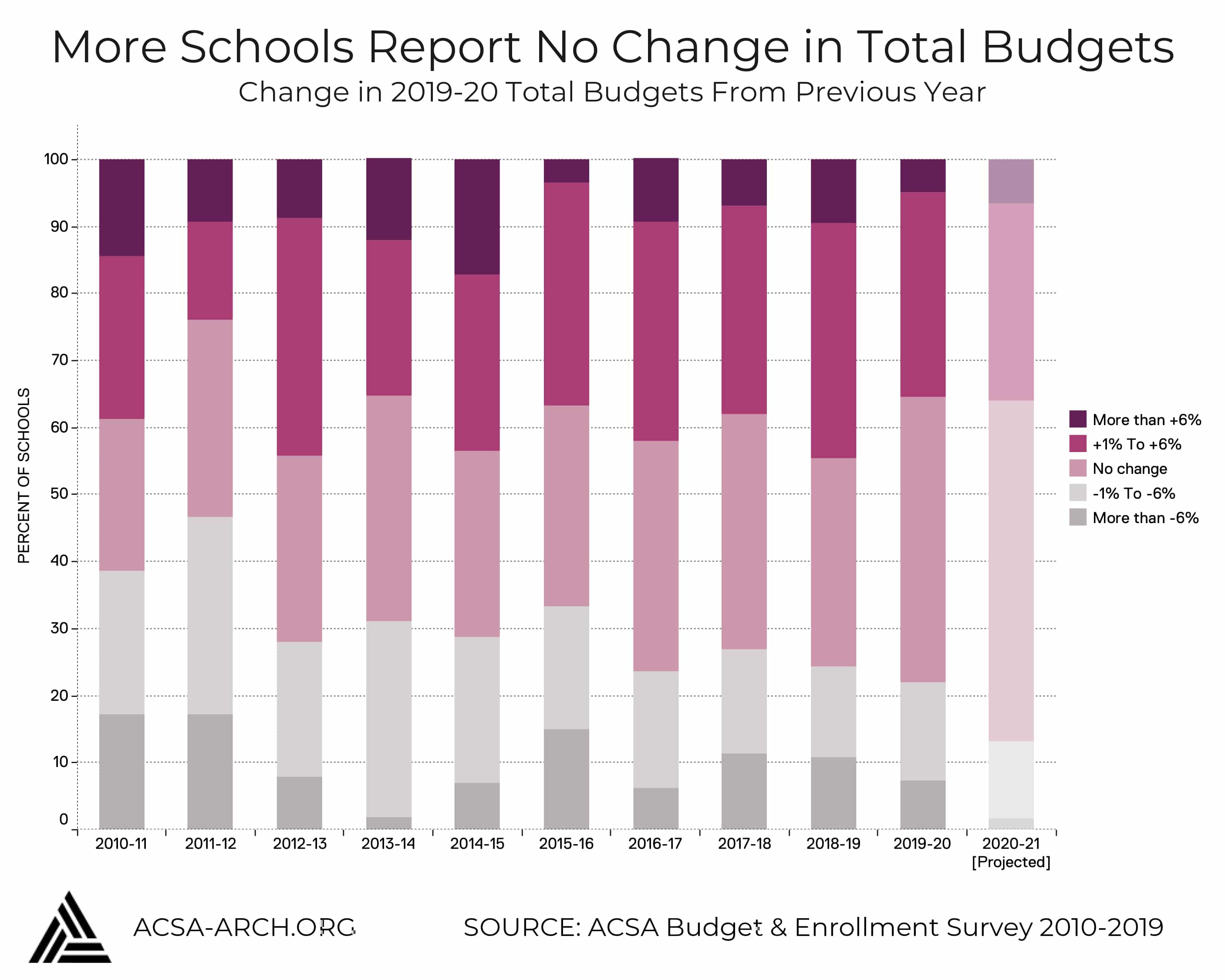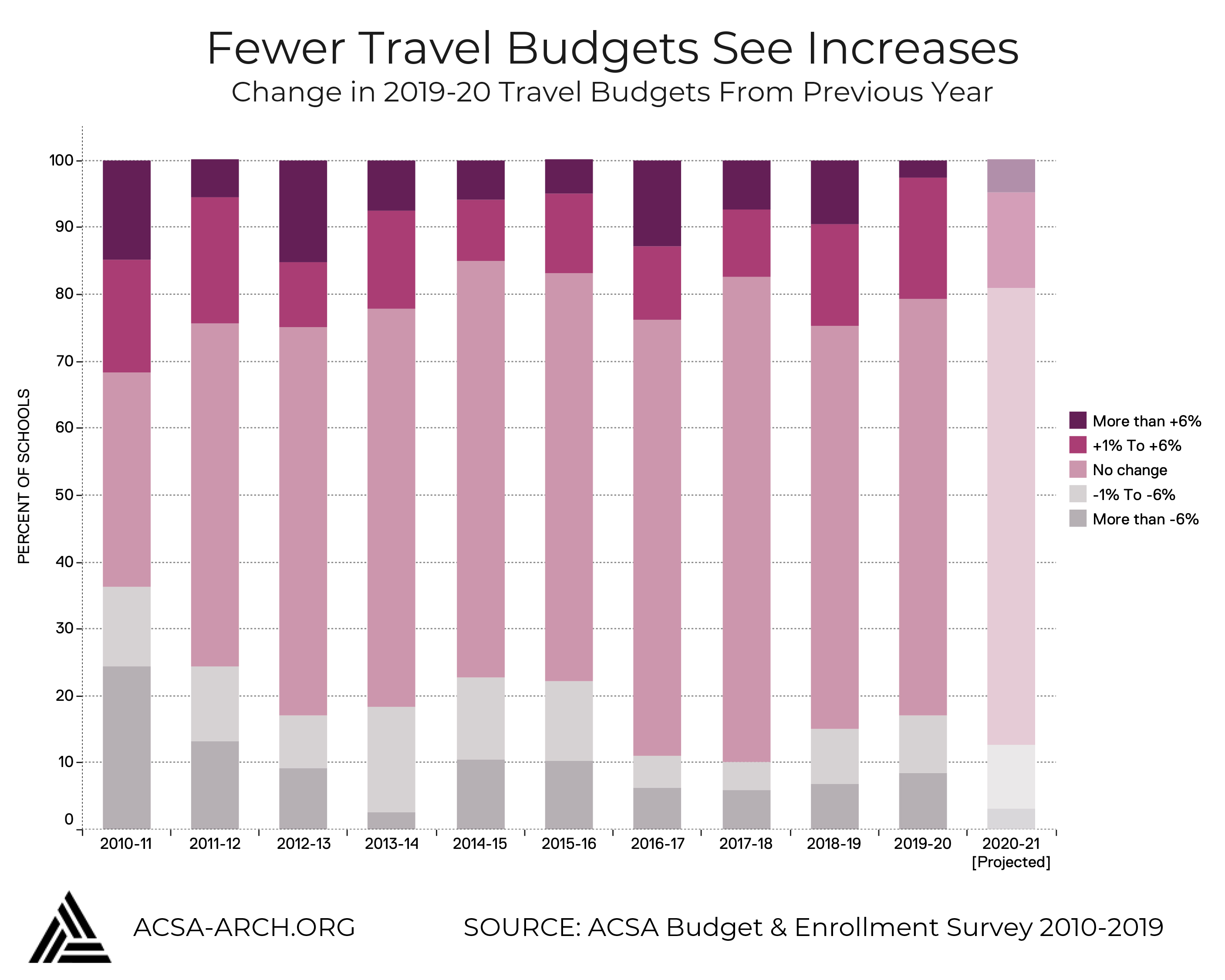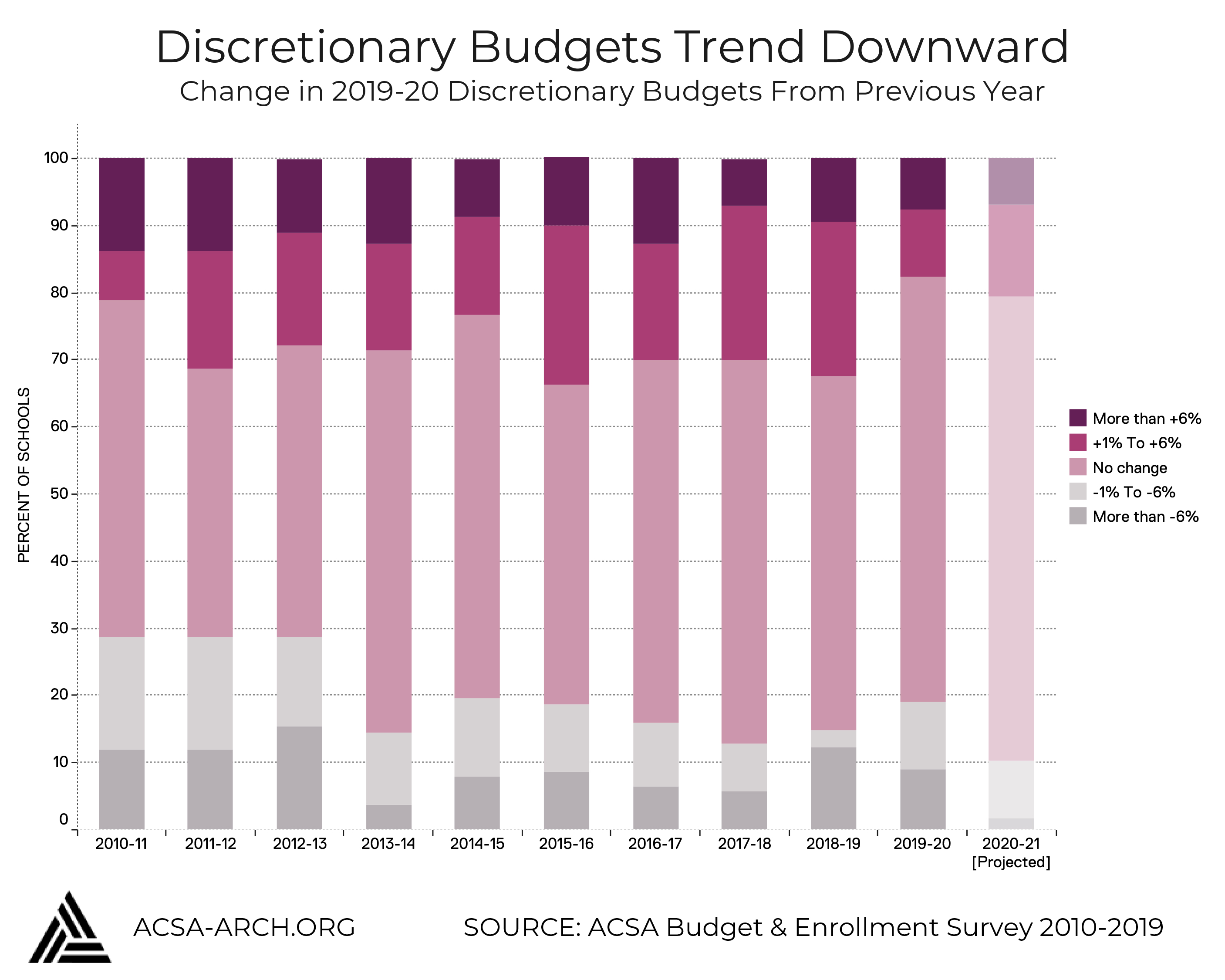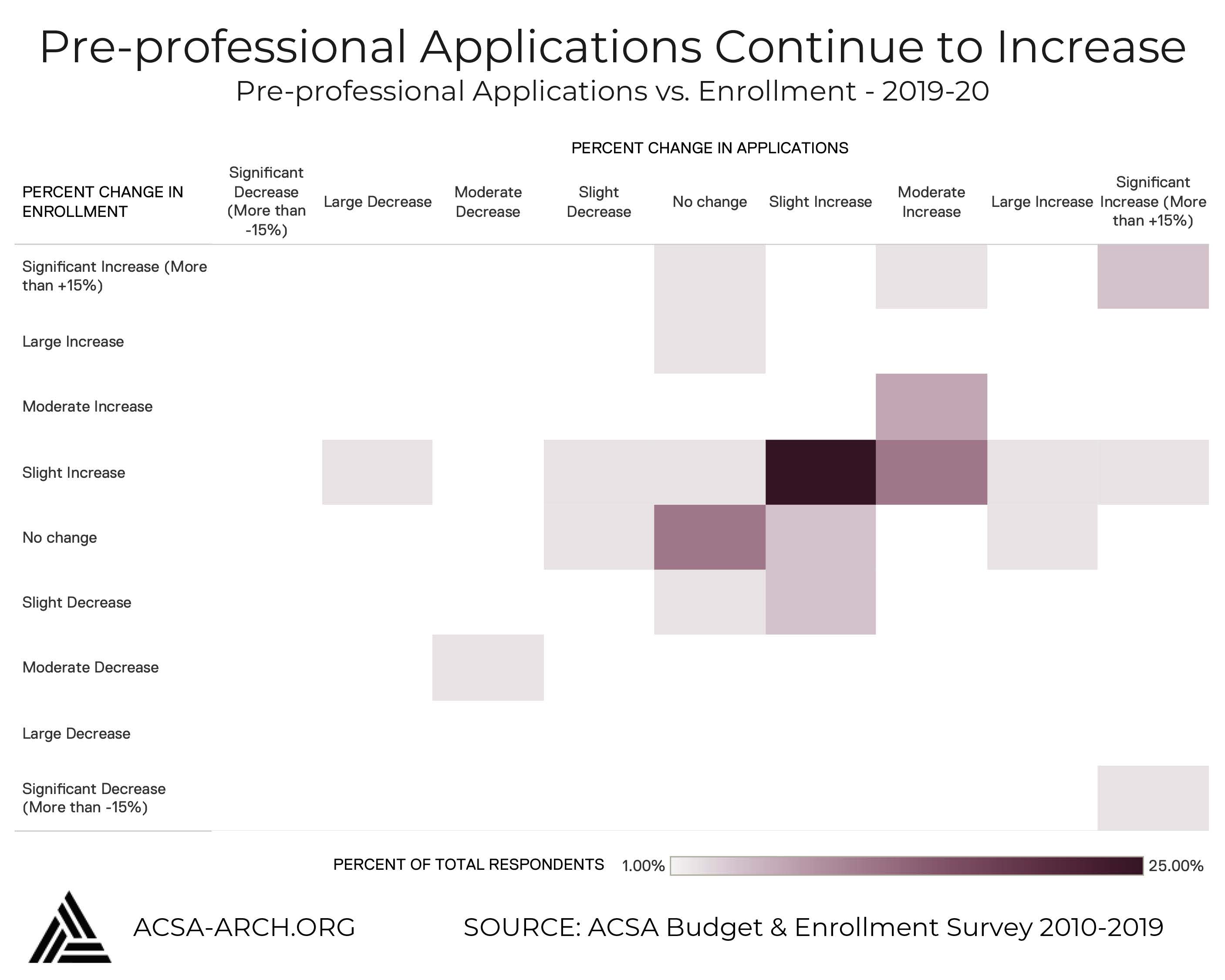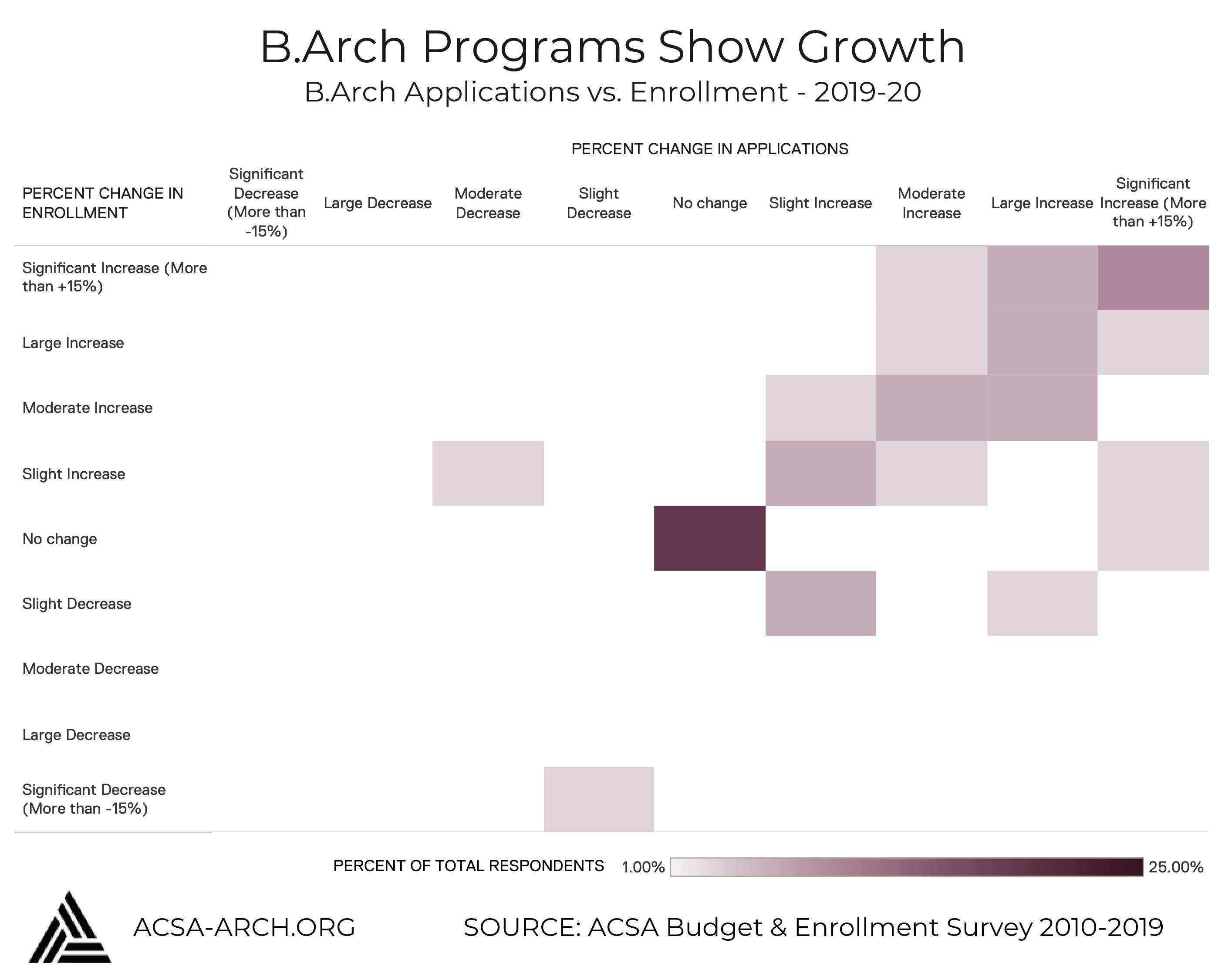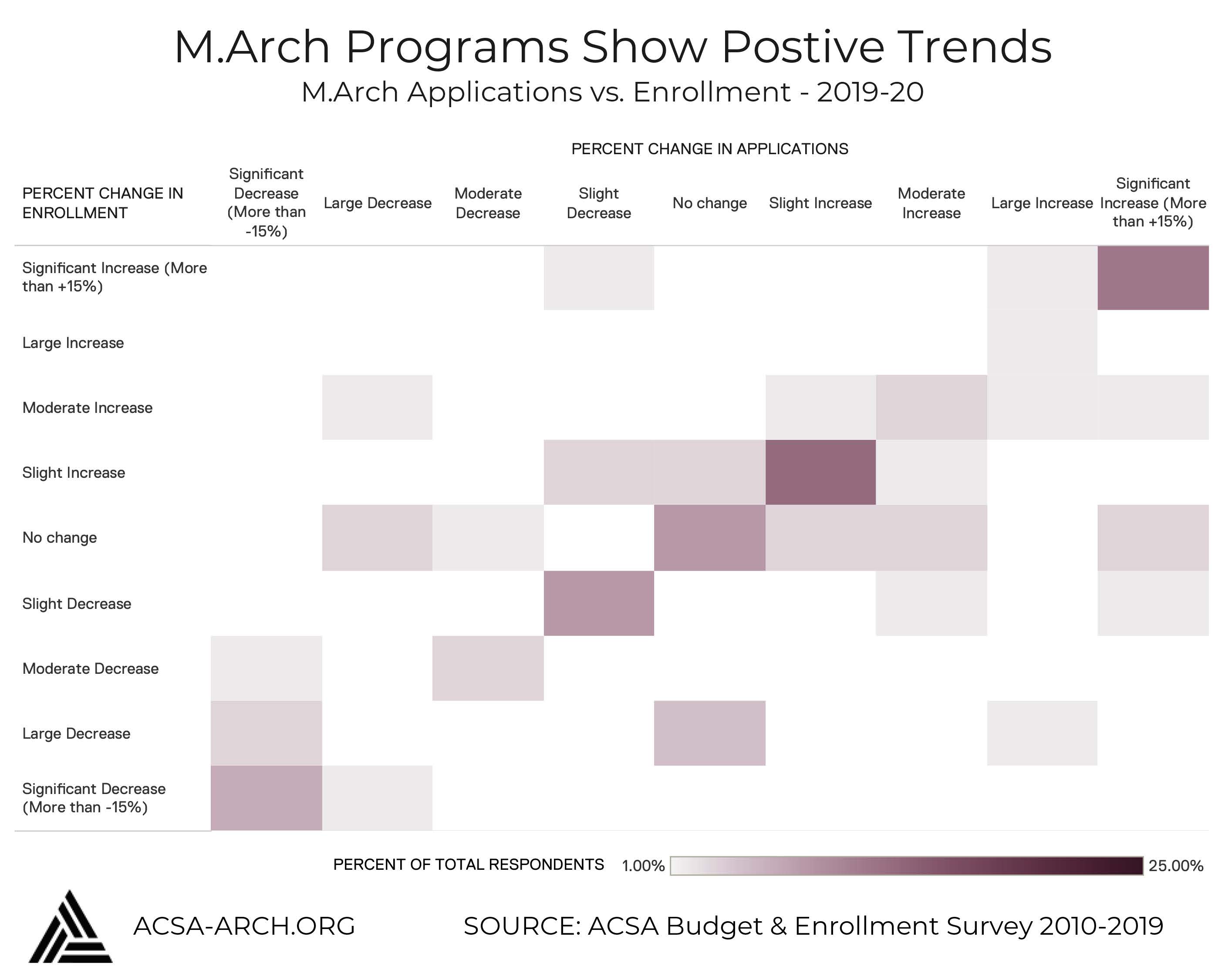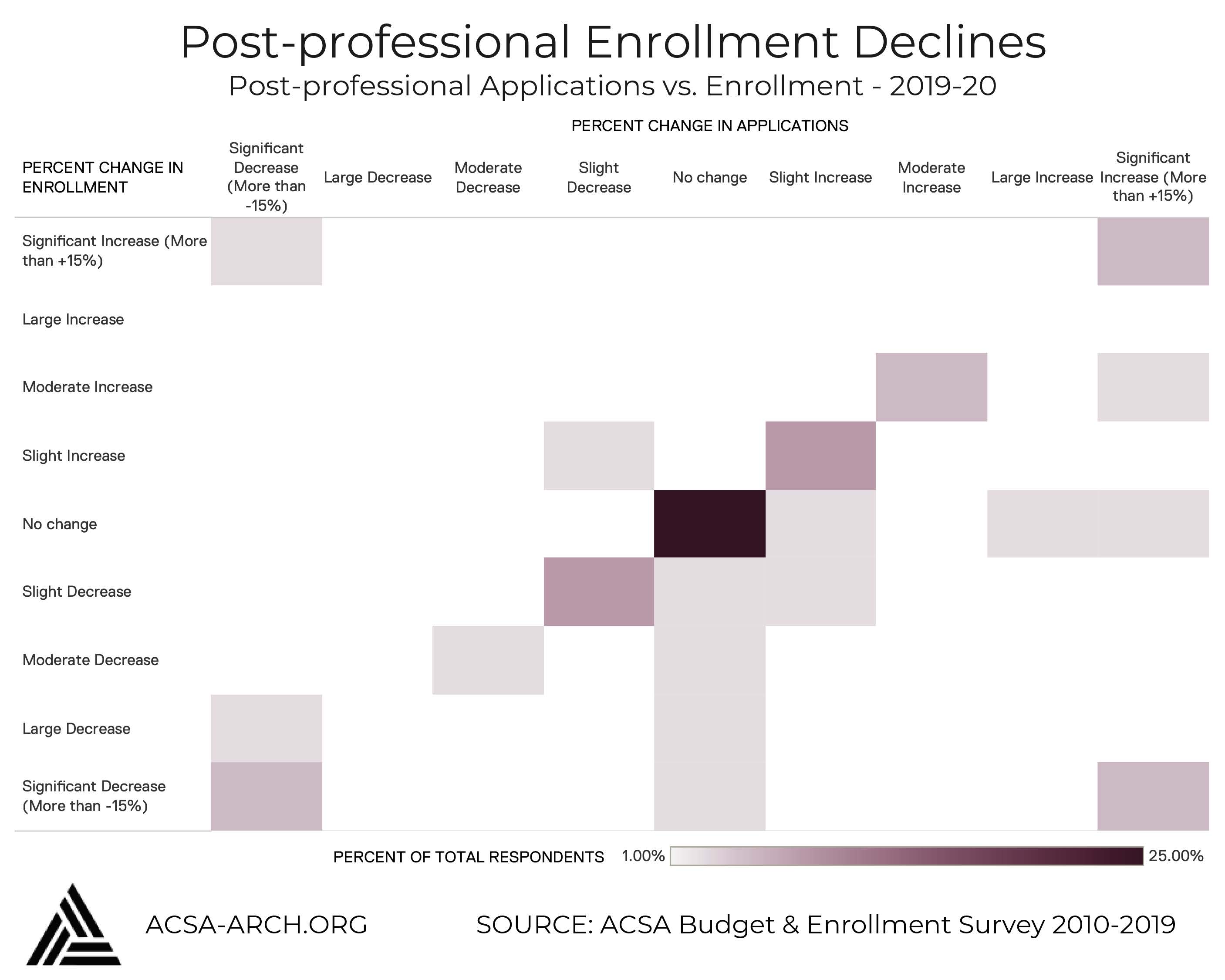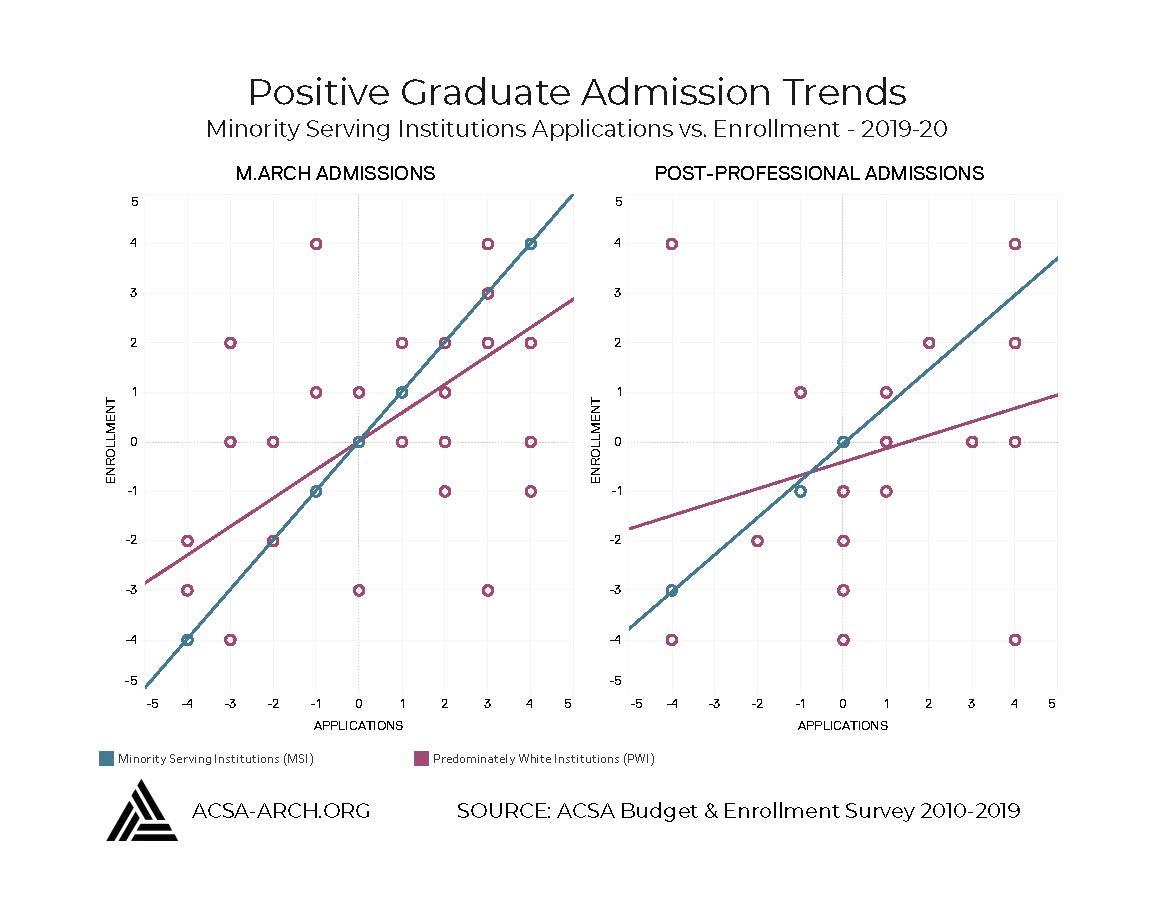Budget and Enrollment Survey Results
This year’s Budget and Enrollment Survey reflects budget, applications, enrollment, and academic staffing changes at 98 member schools. For the first time, the survey was available to all ACSA member institutions, including affiliate and international programs. The survey is conducted annually and this report includes data collection dating as far back as the 2010-11 academic year. The purpose of this report is (1) to provide a cross-section of information regarding the current status of funding and admissions at architecture schools and (2) identify any ongoing trends survey results may suggest. An analysis of the budget and enrollment sections are provided below. Stay tuned for additional findings.
PART 1: ARCHITECTURE PROGRAM BUDGETS
Changes in total budgets in architecture programs showed stability from last year to this year. While approximately 43% of US and Canadian schools reported no change in total budgets, the number of schools reporting a budget increase declined from 45% last year to 36% this year. Responses also showed little to no movement in the percent of schools reporting a decrease. Overall, schools report stable projections for the 2020-21 school year with total budgets showing a slight increase.
Conversely, similar to recent year’s findings for M.Arch programs, respondents show a relatively positive correlation between applications and enrollment. While smaller programs tend to follow that pattern more rigidly, (as applications increase so does enrollment and vice versa), large programs most often saw no change or an increase in enrollment.
This positive correlation shown in professional programs is also seen in post- professional programs. However, post-professional programs showed the highest levels of decrease in enrollment as compared to other degree types.
Overall, enrollment and applications for the 2019-20 year showed positive gains in enrollment among undergraduate programs and a positive relationship between applications and enrollment among graduate programs.
ACSA would like to thank all of the schools that shared their data in regards to budget, enrollment, applications and academic staffing. School participation is integral in our quest to provide a full and accurate picture of these dynamics across architecture schools.
Questions
Kendall Nicholson
Director of Research and Information
202-785-2324
knicholson@acsa-arch.org

 Study Architecture
Study Architecture  ProPEL
ProPEL 